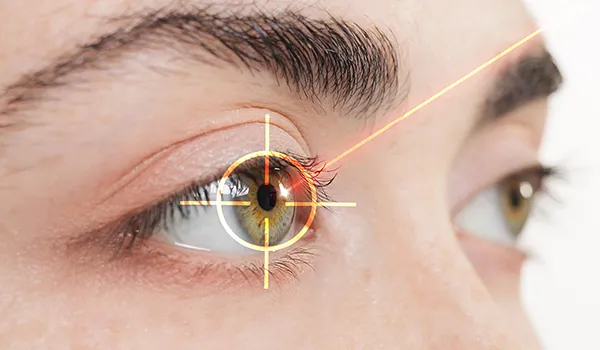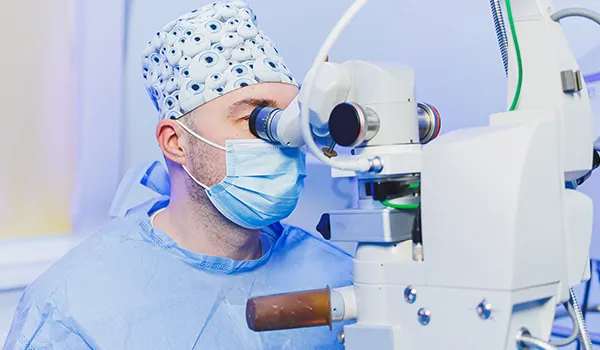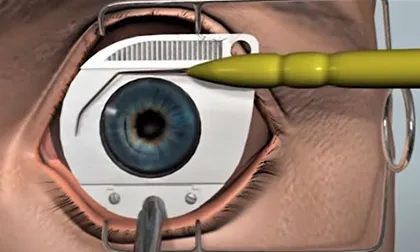
Dr. Lav Kochgaway, a Top-Rated
LASIK Surgeon in Kolkata
Dr. Lav Kochgaway is a leading ophthalmologist known for his expertise and extensive experience in performing advanced LASIK eye surgery. With over 20 years of dedicated practice and a commitment to patient satisfaction, Dr. Kochgaway offers personalized care and exceptional outcomes.

What is LASIK Surgery?
LASIK (Laser-Assisted In Situ Keratomileusis) is a minimally invasive outpatient procedure that corrects refractive errors like nearsightedness, farsightedness, and astigmatism. It uses an excimer laser to reshape the cornea, the clear dome at the front of your eye, focusing light rays precisely onto the retina for clearer vision.
- Improved vision without glasses or contacts
- Enhanced freedom and convenience in daily life
- Long-term results and reduced dependence on corrective lenses
Benefits of LASIK
- Improved Vision: Eliminate the need for glasses or contact lenses and experience the world in sharp focus.
- Enhanced Freedom: Enjoy an active lifestyle without worrying about glasses or contacts slipping or falling out.
- Convenience: Simplify your daily routine and reduce the cost of glasses and contact lens replacements.
- Long-Term Results: LASIK offers a safe and effective solution for lasting vision correction.
LASIK Procedure
Pre-operative Consultation
Discuss your expectations, concerns, and candidacy for LASIK.
The LASIK Procedure
This painless procedure involves creating a corneal flap, reshaping the underlying tissue with the excimer laser, and repositioning the flap.
Recovery
Most patients experience rapid vision improvement within 24 hours.

Types of LASIK Surgery
Dr. Kochgaway offers advanced LASIK technologies to address your specific needs:
- Traditional LASIK: The most common technique using a microkeratome to create the corneal flap.
- Bladeless LASIK (Femto-LASIK): Utilizes a femtosecond laser for a more precise and customized flap creation.
LASIK Candidacy at Dr. Lav Kochgaway’s Clinic
LASIK is not suitable for everyone. During a comprehensive pre-operative consultation, Dr. Kochgaway will evaluate your eye health, corneal thickness, and refractive error to determine if LASIK is the right choice for you.
Advanced LASIK Technologies
- Traditional LASIK: The most common technique using a microkeratome to create the corneal flap.
- Bladeless LASIK (Femto-LASIK): Utilizes a femtosecond laser for a more precise and customized flap creation.
- SMILE (Small Incision Lenticule Extraction): A minimally invasive procedure that uses a femtosecond laser to create a small lenticule within the cornea, which is then removed through a tiny incision. SMILE is known for its faster recovery time and potentially reduced risk of dry eye.
LASIK vs Traditional Vision Correction
LASIK offers several advantages over glasses and contact lenses:
- Reduced dependence: No need for constant adjustments or replacements.
- Improved comfort: Eliminate eye irritation and discomfort associated with contact lens wear.
- Sharper vision: LASIK can sometimes provide sharper vision than glasses or contact lenses.
LASIK Cost
The cost of LASIK varies depending on the specific technology used and your individual needs. Dr. Kochgaway’s team will provide a transparent cost estimate during your consultation.
FAQs
Like any surgery, LASIK comes with potential side effects. Common temporary side effects include dry eyes, glare, halos, and fluctuating vision. These symptoms usually subside within a few weeks or months. In rare cases, more serious complications like undercorrection, overcorrection, or infection can occur. It’s essential to discuss these risks with your surgeon during your consultation.
To be a good candidate for LASIK, you generally need to be at least 18 years old with a stable eye prescription for at least one year. You should also have good overall eye health with no serious eye conditions. Factors like corneal thickness, pupil size, and the specific refractive error will be evaluated during a comprehensive eye exam.
Most patients experience a rapid recovery after LASIK. You can expect some discomfort, dryness, and blurry vision initially. These symptoms usually improve within a few days. It’s essential to follow your surgeon’s post-operative care instructions, including using prescribed eye drops and avoiding strenuous activities. Vision may continue to stabilize over several weeks.
The results of LASIK are long-lasting for most patients. However, age-related changes in vision, such as presbyopia, can occur, potentially requiring reading glasses. In some cases, vision changes might necessitate an enhancement procedure. It’s important to schedule regular eye exams to monitor your vision and overall eye health.

